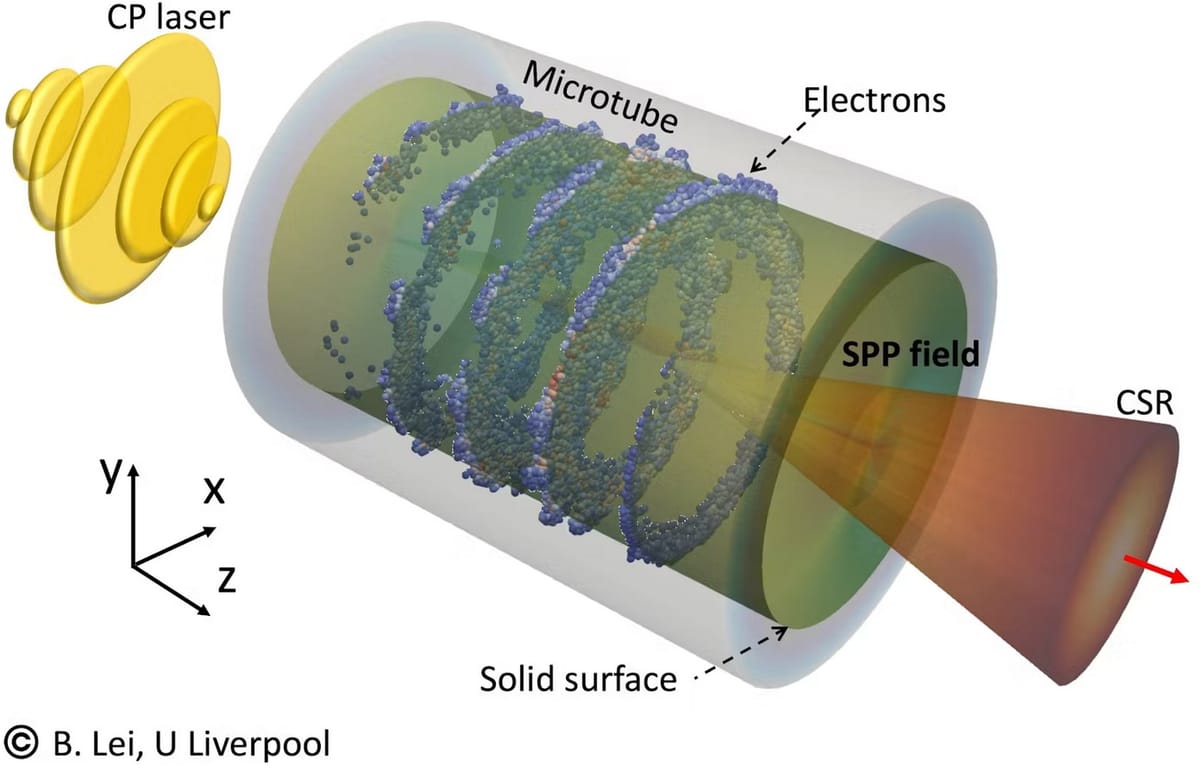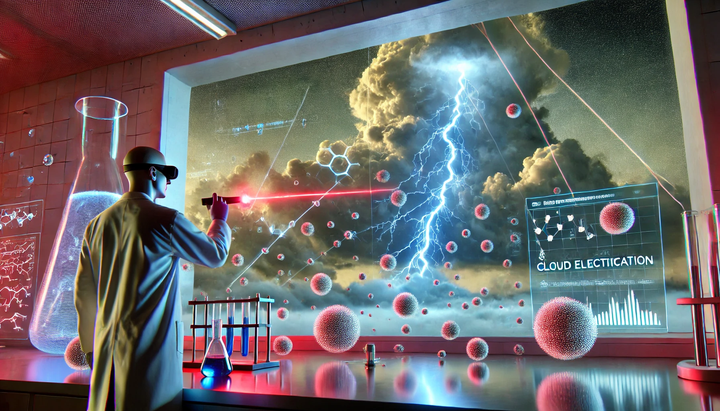Tabletop particle accelerator

A particle accelerator that produces intense X-rays could be squeezed into a device that fits on a table, a new research, which has been accepted for publication in the journal Physical Review Letters, reports.
The way that intense X-rays are currently produced is through a facility called a synchrotron light source. These are used to study materials, drug molecules and biological tissues. Even the smallest existing synchrotrons, however, are about the size of a football stadium.
The authors show how tiny structures called carbon nanotubes and laser light could generate brilliant X-rays on a microchip. Although the device is still at the concept stage, the development has the potential to transform medicine, materials science and other disciplines.
Most people imagine particle accelerators as enormous machines, very large rings of metal and magnets stretching for kilometre beneath the ground. The Large Hadron Collider at Cern (the European Organization for Nuclear Research) in Geneva, for example, is 17 miles (27km) long.
The new research shows that it may soon be possible to build ultra-compact accelerators only a few micrometre wide – smaller than the width of a human hair. These could generate coherent, high-energy X-rays similar to those produced by billion-pound synchrotron facilities, but using devices that fit on a microchip.
Twisted light
The principle relies on a particular property of light known as surface plasmon polaritons. These are waves that form when laser light clings to the surface of a material. In the simulations, a circularly polarised laser pulse was sent through a tiny hollow tube. This polarised laser pulse is light that twists as it moves, very much like a corkscrew.
The swirling field traps and accelerates electron particles inside the tube, forcing them into a spiral motion. As they move in sync, the electrons emit radiation coherently, amplifying the light’s intensity by up to two orders of magnitude.
To make this concept work, carbon nanotubes were used. These are cylindrical structures made of carbon atoms arranged in hexagonal patterns. These nanotubes can withstand very high electric fields, hundreds of times stronger than those in conventional accelerators. They can also be “grown” vertically into what we call a “forest” of closely aligned hollow tubes.
This unique architecture provides an ideal environment for the corkscrewing laser light to couple with the electrons. The circularly polarised laser fits the nanotube’s internal structure – much like a key in a lock which is why we refer to a quantum lock-and-key mechanism.
That kind of performance could change who gets access to cutting-edge X-ray sources. At present, scientists must apply for limited time slots at large, national synchrotron facilities, or free-electron lasers, often waiting months for a few hours of beam time.
Opening up access
The tabletop accelerator approach could make this capability available in hospitals, universities and industrial labs. In fact, wherever it is needed.
In medicine, this could mean clearer mammograms and new imaging techniques that reveal soft tissues in unprecedented detail, without contrast agents. In drug development, researchers could analyse protein structures in-house, dramatically speeding up the design of new therapies. And in materials, science and semiconductor engineering, it could enable non destructive, high speed testing of delicate components.
The study was presented at the 2025 NanoAc workshop on the topic of nanotechnology in accelerator physics, which was held in Liverpool earlier this month. The research currently remains at the simulation stage. But the necessary components already exist: powerful circularly polarised lasers and precisely fabricated nanotube structures are standard tools in advanced research labs.
The next step is experimental verification. If successful, this would mark the beginning of a new generation of ultra compact radiation sources. What excites me most about this technology is not just the physics, but what it represents.
The future of particle acceleration might include very large machines to further push the energy, intensity and discovery boundaries, as well as smaller, smarter and more accessible accelerators.
Article adapted from The Conversation - https://doi.org/10.64628/AB.rkrnyke4r.


